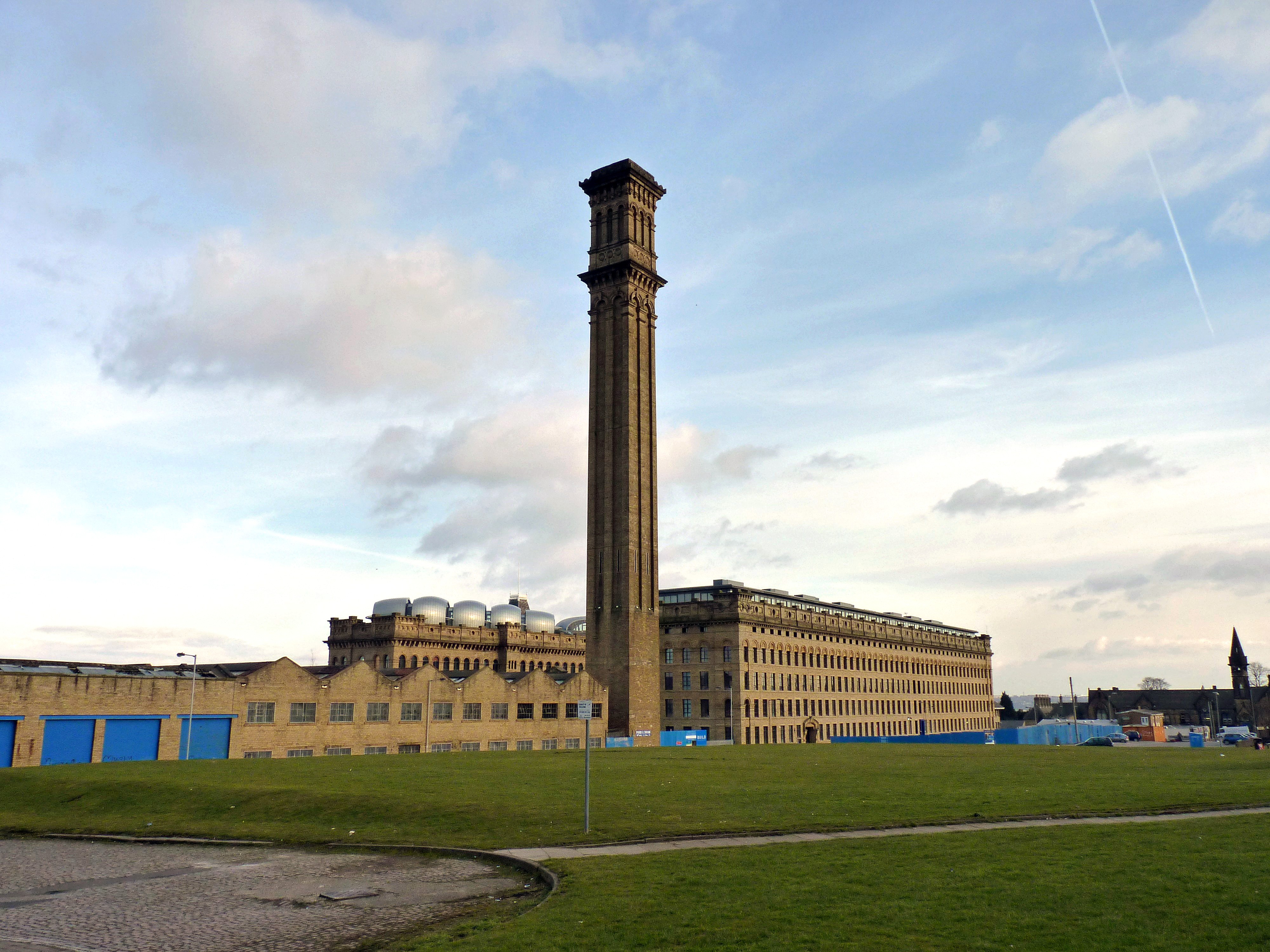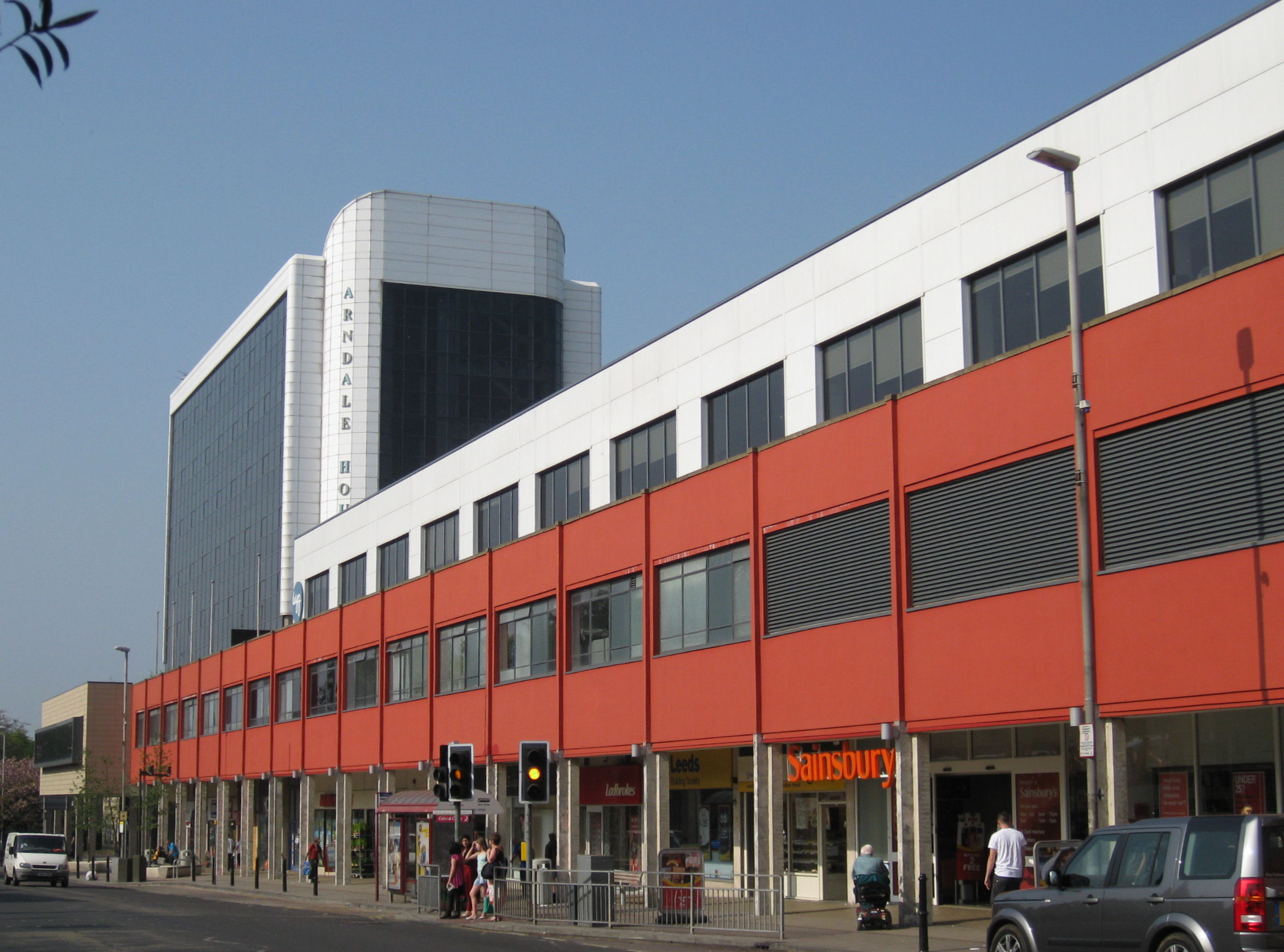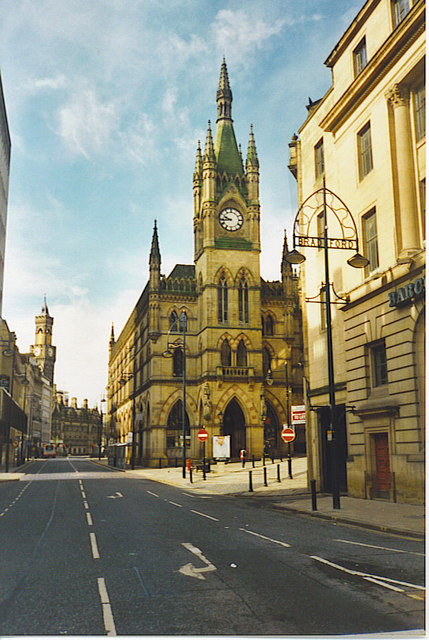|
Swan Arcade, Bradford
The Swan Arcade was a four-storey building located between Market Street and Broadway, Bradford, England and stood opposite the Wool Exchange. The Bradford Beck Bradford Beck is a river that flows through Bradford, West Yorkshire, England, (then Bradford Dale) and on to the River Aire at Shipley. As it reaches Bradford city centre it runs underground after being built over in the 19th century. It is ... ran beneath. Architecture and history The Swan Arcade was designed in the Italianate style by the architects Milnes and France, and was built between 1877 and 1880 from Bolton Woods Stone by J and W Beanland, at a cost of £160,000. The gates were made by Hodkinson and Co, and Taylor and Parsons. It was opened in 1880 by the Mayor of Bradford and local MP Angus Holden, and named after the White Swan Inn, which had previously stood on the same site. The west wing, by John Moulson and sons was added in 1881. It covered a 2,630-square yard site. The Arcade had s ... [...More Info...] [...Related Items...] OR: [Wikipedia] [Google] [Baidu] |
Bradford
Bradford is a city and the administrative centre of the City of Bradford district in West Yorkshire, England. The city is in the Pennines' eastern foothills on the banks of the Bradford Beck. Bradford had a population of 349,561 at the 2011 census; the second-largest population centre in the county after Leeds, which is to the east of the city. It shares a continuous built-up area with the towns of Shipley, Silsden, Bingley and Keighley in the district as well as with the metropolitan county's other districts. Its name is also given to Bradford Beck. It became a West Riding of Yorkshire municipal borough in 1847 and received its city charter in 1897. Since local government reform in 1974, the city is the administrative centre of a wider metropolitan district, city hall is the meeting place of Bradford City Council. The district has civil parishes and unparished areas and had a population of , making it the most populous district in England. In the century leading up ... [...More Info...] [...Related Items...] OR: [Wikipedia] [Google] [Baidu] |
Bradford Telegraph And Argus
The ''Telegraph & Argus'' is the daily newspaper for Bradford, West Yorkshire, England. It is published six times each week, from Monday to Saturday inclusive. The newspaper has offices in Newhall Way, Bradford, from where its journalists work. Locally, the paper is known as the T&A. It also breaks news 24/7 on its website, which is viewed by more than 1.3 million users each month. Overview Founded in 1868, the paper was a broadsheet until 1989 when it became tabloid. It features a range of news, features, sport, lifestyle articles, classified advertising and special supplements. The Telegraph & Argus is owned by Newsquest, the second largest publisher of regional newspapers in the United Kingdom, which is owned by the American media empire Gannett. Perry Austin-Clarke was editor from 1992 to 2017, making him the paper's longest-serving editor. As of 2017, the editor was Nigel Burton. History The ''Argus Weekly'' occupied Argus Chambers in the Britannia House building over ... [...More Info...] [...Related Items...] OR: [Wikipedia] [Google] [Baidu] |
History Of Bradford
Bradford is a city status in the United Kingdom, city and the administrative centre of the City of Bradford district in West Yorkshire, England. The city is in the Pennines' eastern foothills on the banks of the Bradford Beck. Bradford had a population of 349,561 at the 2011 Census for England and Wales, 2011 census; the second-largest population centre in the county after Leeds, which is to the east of the city. It shares West Yorkshire Built-up Area, a continuous built-up area with the towns of Shipley, West Yorkshire, Shipley, Silsden, Bingley and Keighley in the district as well as with the metropolitan county's other districts. Its name is also given to Bradford Beck. It became a West Riding of Yorkshire municipal borough in 1847 and received its city charter in 1897. Since Local Government Act 1972, local government reform in 1974, the city is the administrative centre of a wider metropolitan district, city hall is the meeting place of Bradford City Council. The district ... [...More Info...] [...Related Items...] OR: [Wikipedia] [Google] [Baidu] |
Buildings And Structures Demolished In 1962
A building, or edifice, is an enclosed structure with a roof and walls standing more or less permanently in one place, such as a house or factory (although there's also portable buildings). Buildings come in a variety of sizes, shapes, and functions, and have been adapted throughout history for a wide number of factors, from building materials available, to weather conditions, land prices, ground conditions, specific uses, prestige, and aesthetic reasons. To better understand the term ''building'' compare the list of nonbuilding structures. Buildings serve several societal needs – primarily as shelter from weather, security, living space, privacy, to store belongings, and to comfortably live and work. A building as a shelter represents a physical division of the human habitat (a place of comfort and safety) and the ''outside'' (a place that at times may be harsh and harmful). Ever since the first cave paintings, buildings have also become objects or canvasses of much artistic ... [...More Info...] [...Related Items...] OR: [Wikipedia] [Google] [Baidu] |
Commercial Buildings Completed In 1880
Commercial may refer to: * a dose of advertising conveyed through media (such as - for example - radio or television) ** Radio advertisement ** Television advertisement * (adjective for:) commerce, a system of voluntary exchange of products and services ** (adjective for:) trade Trade involves the transfer of goods and services from one person or entity to another, often in exchange for money. Economists refer to a system or network that allows trade as a market. An early form of trade, barter, saw the direct excha ..., the trading of something of economic value such as goods, services, information or money * Two functional constituencies in elections for the Legislative Council of Hong Kong: ** Commercial (First) ** Commercial (Second) * ''Commercial'' (album), a 2009 album by Los Amigos Invisibles * Commercial broadcasting * Commercial style or early Chicago school, an American architectural style * Commercial Drive, Vancouver, a road in Vancouver, British Columbia ... [...More Info...] [...Related Items...] OR: [Wikipedia] [Google] [Baidu] |
Former Shops In England
A former is an object, such as a template, Gauge block, gauge or cutting Die (manufacturing), die, which is used to form something such as a boat's Hull (watercraft), hull. Typically, a former gives shape to a structure that may have complex curvature. A former may become an integral part of the finished structure, as in an aircraft fuselage, or it may be removable, being using in the construction process and then discarded or re-used. Aircraft formers Formers are used in the construction of aircraft fuselage, of which a typical fuselage has a series from the nose to the empennage, typically perpendicular to the Flight control surfaces#Longitudinal_axis, longitudinal axis of the aircraft. The primary purpose of formers is to establish the shape of the fuselage and reduce the column length of stringers to prevent instability. Formers are typically attached to longerons, which support the skin of the aircraft. The "former-and-longeron" technique (also called stations and string ... [...More Info...] [...Related Items...] OR: [Wikipedia] [Google] [Baidu] |
Demolished Buildings And Structures In England
Demolition (also known as razing, cartage, and wrecking) is the science and engineering in safely and efficiently tearing down of buildings and other artificial structures. Demolition contrasts with deconstruction, which involves taking a building apart while carefully preserving valuable elements for reuse purposes. For small buildings, such as houses, that are only two or three stories high, demolition is a rather simple process. The building is pulled down either manually or mechanically using large hydraulic equipment: elevated work platforms, cranes, excavators or bulldozers. Larger buildings may require the use of a wrecking ball, a heavy weight on a cable that is swung by a crane into the side of the buildings. Wrecking balls are especially effective against masonry, but are less easily controlled and often less efficient than other methods. Newer methods may use rotational hydraulic shears and silenced rock-breakers attached to excavators to cut or break thro ... [...More Info...] [...Related Items...] OR: [Wikipedia] [Google] [Baidu] |
Buildings And Structures In Bradford
A building, or edifice, is an enclosed structure with a roof and walls standing more or less permanently in one place, such as a house or factory (although there's also portable buildings). Buildings come in a variety of sizes, shapes, and functions, and have been adapted throughout history for a wide number of factors, from building materials available, to weather conditions, land prices, ground conditions, specific uses, prestige, and aesthetic reasons. To better understand the term ''building'' compare the list of nonbuilding structures. Buildings serve several societal needs – primarily as shelter from weather, security, living space, privacy, to store belongings, and to comfortably live and work. A building as a shelter represents a physical division of the human habitat (a place of comfort and safety) and the ''outside'' (a place that at times may be harsh and harmful). Ever since the first cave paintings, buildings have also become objects or canvasses of much artisti ... [...More Info...] [...Related Items...] OR: [Wikipedia] [Google] [Baidu] |
James Lees-Milne
(George) James Henry Lees-Milne (6 August 1908 – 28 December 1997) was an English writer and expert on country houses, who worked for the National Trust from 1936 to 1973. He was an architectural historian, novelist and biographer. His extensive diaries remain in print. Early life Lees-Milne was born on 6 August 1908 at Wickhamford Manor, Worcestershire. His biographer Michael Bloch observed that in ''Another Self'', Lees-Milne "conveys the impression that he hailed from an old county family and that Wickhamford was their native seat. This was not quite the case.... His father... had bought Wickhamford, and moved from Lancashire to Worcestershire, only two years before Jim's birth." He was the second of three children and the elder son of a prosperous cotton manufacturer and farmer, George Crompton Lees-Milne (1880–1949), and his wife Helen Christina (1884–1962), a daughter of Henry Bailey, JP and Deputy Lieutenant of Coates, Gloucestershire. Lees-Milne's maternal grandf ... [...More Info...] [...Related Items...] OR: [Wikipedia] [Google] [Baidu] |
Arndale Centre
Arndale Centres were the first "American style" malls to be built in the United Kingdom. In total, twenty three Arndales have been built in the United Kingdom, and three in Australia. The first opened in Jarrow, County Durham, in 1961, as a pedestrianised shopping area. History Shortly after the end of World War II, Arnold Hagenbach, a baker with a talent for property investment, and Sam Chippendale, an estate agent from Otley, set up a company called the Arndale Property Trust, the name being a portmanteau of "Arnold" and "Chippendale". The trust purchased Bradford's Victorian Swan Arcade in 1954, with the intention of demolishing it and developing a new shopping centre, but it took eight years before leases expired and building work could commence, so in the meantime it developed a site in Jarrow, County Durham, which became the first Arndale Centre when it opened in 1961. Its trademark Viking statue, built by the Trust, was unveiled on 17 February 1962. When the ... [...More Info...] [...Related Items...] OR: [Wikipedia] [Google] [Baidu] |
Wool Exchange, Bradford
The Wool Exchange Building in Bradford, West Yorkshire, England is a grade I-listed building built as a wool-trading centre in the 19th century. The grandeur of its Gothic Revival architecture is symbolic of the wealth and importance that wool brought to Bradford. Today it is a Waterstones bookshop as well as a cafe. Design history It was built between 1864 and 1867. The commission to design the building was given great importance in Bradford and John Ruskin was invited to give his advice. In the lecture, Ruskin famously declared 'I do not care about this Exchange - because you don't'. Ruskin argued that good architecture could only emerge from a pious, paternalistic society and that the Exchange represented the worst form of exploitative capitalism. There was a competition to design the building: entries included one from Norman Shaw, but it was won by the local architects Lockwood and Mawson. The foundation stone was laid by the then Prime Minister, Lord Palmerston. The a ... [...More Info...] [...Related Items...] OR: [Wikipedia] [Google] [Baidu] |
Margin Released
John Boynton Priestley (; 13 September 1894 – 14 August 1984) was an English novelist, playwright, screenwriter, broadcaster and social commentator. His Yorkshire background is reflected in much of his fiction, notably in ''The Good Companions'' (1929), which first brought him to wide public notice. Many of his plays are structured around a time slip, and he went on to develop a new theory of time, with different dimensions that link past, present and future. In 1940 he broadcast a series of short propaganda radio talks, which were credited with strengthening civilian morale during the Battle of Britain. In the following years his left-wing beliefs brought him into conflict with the government and influenced the development of the welfare state. Early life Priestley was born on 13 September 1894 at 34 Mannheim Road, Manningham, which he described as an "extremely respectable" suburb of Bradford. His father, Jonathan Priestley (1868–1924), was a headmaster. His moth ... [...More Info...] [...Related Items...] OR: [Wikipedia] [Google] [Baidu] |









